Lithography
Lithography (from Ancient Greek λίθος, lithos, meaning 'stone', and γράφειν, graphein, meaning 'to write')[1] is a method of printing originally based on the immiscibility of oil and water.[2] The printing is from a stone (lithographic limestone) or a metal plate with a smooth surface. It was invented in 1796 by German author and actor Alois Senefelder as a cheap method of publishing theatrical works.[3][4] Lithography can be used to print text or artwork onto paper or other suitable material.[5]
.jpg)
| Part of a series on the | ||||||||||||||||||||||||||||||||||||||||||||||||||||||
| History of printing | ||||||||||||||||||||||||||||||||||||||||||||||||||||||
|---|---|---|---|---|---|---|---|---|---|---|---|---|---|---|---|---|---|---|---|---|---|---|---|---|---|---|---|---|---|---|---|---|---|---|---|---|---|---|---|---|---|---|---|---|---|---|---|---|---|---|---|---|---|---|
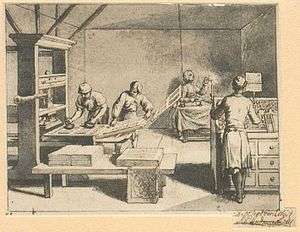 | ||||||||||||||||||||||||||||||||||||||||||||||||||||||
|
||||||||||||||||||||||||||||||||||||||||||||||||||||||
Lithography originally used an image drawn with oil, fat, or wax onto the surface of a smooth, level lithographic limestone plate. The stone was treated with a mixture of acid and gum arabic, etching the portions of the stone that were not protected by the grease-based image. When the stone was subsequently moistened, these etched areas retained water; an oil-based ink could then be applied and would be repelled by the water, sticking only to the original drawing. The ink would finally be transferred to a blank paper sheet, producing a printed page. This traditional technique is still used in some fine art printmaking applications.
In modern lithography, the image is made of a polymer coating applied to a flexible plastic or metal plate.[6] The image can be printed directly from the plate (the orientation of the image is reversed), or it can be offset, by transferring the image onto a flexible sheet (rubber) for printing and publication.
As a printing technology, lithography is different from intaglio printing (gravure), wherein a plate is either engraved, etched, or stippled to score cavities to contain the printing ink; and woodblock printing or letterpress printing, wherein ink is applied to the raised surfaces of letters or images. Today, most types of high-volume books and magazines, especially when illustrated in colour, are printed with offset lithography, which has become the most common form of printing technology since the 1960s.
The related term "photolithography" refers to the use of photographic images in lithographic printing, whether these images are printed directly from a stone or from a metal plate, as in offset printing. "Photolithography" is used synonymously with "offset printing". The technique as well as the term were introduced in Europe in the 1850s. Beginning in the 1960s, photolithography has played an important role in the fabrication and mass production of integrated circuits in the microelectronics industry.[7][8]
The principle of lithography
Lithography uses simple chemical processes to create an image. For instance, the positive part of an image is a water-repelling ("hydrophobic") substance, while the negative image would be water-retaining ("hydrophilic"). Thus, when the plate is introduced to a compatible printing ink and water mixture, the ink will adhere to the positive image and the water will clean the negative image. This allows a flat print plate to be used, enabling much longer and more detailed print runs than the older physical methods of printing (e.g., intaglio printing, letterpress printing).
Lithography was invented by Alois Senefelder[1] in the Kingdom of Bavaria in 1796. In the early days of lithography, a smooth piece of limestone was used (hence the name "lithography": "lithos" (λιθος) is the ancient Greek word for stone). After the oil-based image was put on the surface, a solution of gum arabic in water was applied, the gum sticking only to the non-oily surface. During printing, water adhered to the gum arabic surfaces and was repelled by the oily parts, while the oily ink used for printing did the opposite.
Lithography on limestone
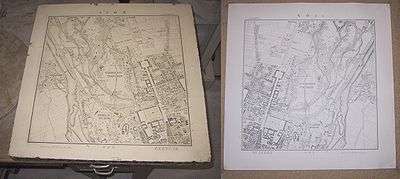
Lithography works because of the mutual repulsion of oil and water. The image is drawn on the surface of the print plate with a fat or oil-based medium (hydrophobic) such as a wax crayon, which may be pigmented to make the drawing visible. A wide range of oil-based media is available, but the durability of the image on the stone depends on the lipid content of the material being used, and its ability to withstand water and acid. After the drawing of the image, an aqueous solution of gum arabic, weakly acidified with nitric acid HNO
3 is applied to the stone. The function of this solution is to create a hydrophilic layer of calcium nitrate salt, Ca(NO
3)
2, and gum arabic on all non-image surfaces.[1] The gum solution penetrates into the pores of the stone, completely surrounding the original image with a hydrophilic layer that will not accept the printing ink. Using lithographic turpentine, the printer then removes any excess of the greasy drawing material, but a hydrophobic molecular film of it remains tightly bonded to the surface of the stone, rejecting the gum arabic and water, but ready to accept the oily ink.[9]
[10] When printing, the stone is kept wet with water. Naturally the water is attracted to the layer of gum and salt created by the acid wash. Printing ink based on drying oils such as linseed oil and varnish loaded with pigment is then rolled over the surface. The water repels the greasy ink but the hydrophobic areas left by the original drawing material accept it. When the hydrophobic image is loaded with ink, the stone and paper are run through a press that applies even pressure over the surface, transferring the ink to the paper and off the stone.
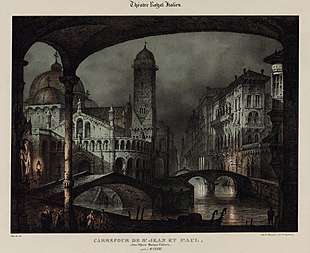
Senefelder had experimented during the early 19th century with multicolor lithography; in his 1819 book, he predicted that the process would eventually be perfected and used to reproduce paintings.[3] Multi-color printing was introduced by a new process developed by Godefroy Engelmann (France) in 1837 known as chromolithography.[3] A separate stone was used for each color, and a print went through the press separately for each stone. The main challenge was to keep the images aligned (in register). This method lent itself to images consisting of large areas of flat color, and resulted in the characteristic poster designs of this period.
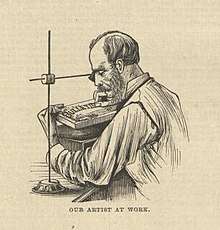
"Lithography, or printing from soft stone, largely took the place of engraving in the production of English commercial maps after about 1852. It was a quick, cheap process and had been used to print British army maps during the Peninsula War. Most of the commercial maps of the second half of the 19th century were lithographed and unattractive, though accurate enough."[11]
Modern lithographic process
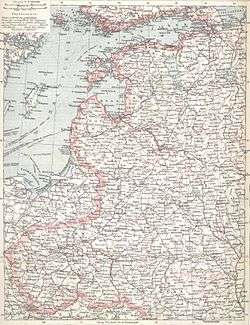
High-volume lithography is used presently to produce posters, maps, books, newspapers, and packaging—just about any smooth, mass-produced item with print and graphics on it. Most books, indeed all types of high-volume text, are now printed using offset lithography.
For offset lithography, which depends on photographic processes, flexible aluminum, polyester, mylar or paper printing plates are used instead of stone tablets. Modern printing plates have a brushed or roughened texture and are covered with a photosensitive emulsion. A photographic negative of the desired image is placed in contact with the emulsion and the plate is exposed to ultraviolet light. After development, the emulsion shows a reverse of the negative image, which is thus a duplicate of the original (positive) image. The image on the plate emulsion can also be created by direct laser imaging in a CTP (Computer-To-Plate) device known as a platesetter. The positive image is the emulsion that remains after imaging. Non-image portions of the emulsion have traditionally been removed by a chemical process, though in recent times plates have come available that do not require such processing.
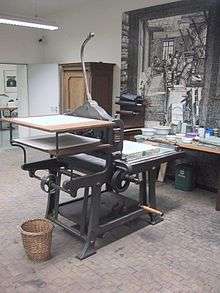
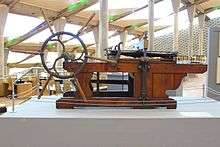
The plate is affixed to a cylinder on a printing press. Dampening rollers apply water, which covers the blank portions of the plate but is repelled by the emulsion of the image area. Hydrophobic ink, which is repelled by the water and only adheres to the emulsion of the image area, is then applied by the inking rollers.
If this image were transferred directly to paper, it would create a mirror-type image and the paper would become too wet. Instead, the plate rolls against a cylinder covered with a rubber blanket, which squeezes away the water, picks up the ink and transfers it to the paper with uniform pressure. The paper passes between the blanket cylinder and a counter-pressure or impression cylinder and the image is transferred to the paper. Because the image is first transferred, or offset to the rubber blanket cylinder, this reproduction method is known as offset lithography or offset printing.[12]
Many innovations and technical refinements have been made in printing processes and presses over the years, including the development of presses with multiple units (each containing one printing plate) that can print multi-color images in one pass on both sides of the sheet, and presses that accommodate continuous rolls (webs) of paper, known as web presses. Another innovation was the continuous dampening system first introduced by Dahlgren, instead of the old method (conventional dampening) which is still used on older presses, using rollers covered with molleton (cloth) that absorbs the water. This increased control of the water flow to the plate and allowed for better ink and water balance. Current dampening systems include a "delta effect or vario", which slows the roller in contact with the plate, thus creating a sweeping movement over the ink image to clean impurities known as "hickies".
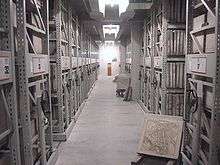
This press is also called an ink pyramid because the ink is transferred through several layers of rollers with different purposes. Fast lithographic 'web' printing presses are commonly used in newspaper production.
The advent of desktop publishing made it possible for type and images to be modified easily on personal computers for eventual printing by desktop or commercial presses. The development of digital imagesetters enabled print shops to produce negatives for platemaking directly from digital input, skipping the intermediate step of photographing an actual page layout. The development of the digital platesetter during the late 20th century eliminated film negatives altogether by exposing printing plates directly from digital input, a process known as computer to plate printing.
Microlithography and nanolithography
Microlithography and nanolithography refer specifically to lithographic patterning methods capable of structuring material on a fine scale. Typically, features smaller than 10 micrometers are considered microlithographic, and features smaller than 100 nanometers are considered nanolithographic. Photolithography is one of these methods, often applied to semiconductor device fabrication. Photolithography is also commonly used for fabricating microelectromechanical systems (MEMS) devices. Photolithography generally uses a pre-fabricated photomask or reticle as a master from which the final pattern is derived.
Although photolithographic technology is the most commercially advanced form of nanolithography, other techniques are also used. Some, for example electron beam lithography, are capable of much greater patterning resolution (sometimes as small as a few nanometers). Electron beam lithography is also important commercially, primarily for its use in the manufacture of photomasks. Electron beam lithography as it is usually practiced is a form of maskless lithography, in that a mask is not required to generate the final pattern. Instead, the final pattern is created directly from a digital representation on a computer, by controlling an electron beam as it scans across a resist-coated substrate. Electron beam lithography has the disadvantage of being much slower than photolithography.
In addition to these commercially well-established techniques, a large number of promising microlithographic and nanolithographic technologies exist or are being developed, including nanoimprint lithography, interference lithography, X-ray lithography, extreme ultraviolet lithography, magnetolithography and scanning probe lithography. Some of these new techniques have been used successfully for small-scale commercial and important research applications. Surface-charge lithography, in fact Plasma desorption mass spectrometry can be directly patterned on polar dielectric crystals via pyroelectric effect,[13] Diffraction lithography.[14]
Lithography as an artistic medium
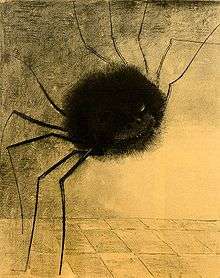
During the first years of the 19th century, lithography had only a limited effect on printmaking, mainly because technical difficulties remained to be overcome. Germany was the main center of production in this period. Godefroy Engelmann, who moved his press from Mulhouse to Paris in 1816, largely succeeded in resolving the technical problems, and during the 1820s lithography was adopted by artists such as Delacroix and Géricault. After early experiments such as Specimens of Polyautography (1803),[15] which had experimental works by a number of British artists including Benjamin West, Henry Fuseli, James Barry, Thomas Barker of Bath, Thomas Stothard, Henry Richard Greville, Richard Cooper, Henry Singleton, and William Henry Pyne, London also became a center, and some of Géricault's prints were in fact produced there. Goya in Bordeaux produced his last series of prints by lithography—The Bulls of Bordeaux of 1828. By the mid-century the initial enthusiasm had somewhat diminished in both countries, although the use of lithography was increasingly favored for commercial applications, which included the prints of Daumier, published in newspapers. Rodolphe Bresdin and Jean-François Millet also continued to practice the medium in France, and Adolf Menzel in Germany. In 1862 the publisher Cadart tried to initiate a portfolio of lithographs by various artists, which was not successful but included several prints by Manet. The revival began during the 1870s, especially in France with artists such as Odilon Redon, Henri Fantin-Latour and Degas producing much of their work in this manner. The need for strictly limited editions to maintain the price had now been realized, and the medium became more accepted.
_G0192-59_-_Google_Art_Project.jpg)
In the 1890s, color lithography gained success in part by the emergence of Jules Chéret, known as the father of the modern poster, whose work went on to inspire a new generation of poster designers and painters, most notably Toulouse-Lautrec, and former student of Chéret, Georges de Feure. By 1900 the medium in both color and monotone was an accepted part of printmaking.
During the 20th century, a group of artists, including Braque, Calder, Chagall, Dufy, Léger, Matisse, Miró, and Picasso, rediscovered the largely undeveloped artform of lithography thanks to the Mourlot Studios, also known as Atelier Mourlot, a Parisian printshop founded in 1852 by the Mourlot family. The Atelier Mourlot originally specialized in the printing of wallpaper; but it was transformed when the founder's grandson, Fernand Mourlot, invited a number of 20th-century artists to explore the complexities of fine art printing. Mourlot encouraged the painters to work directly on lithographic stones in order to create original artworks that could then be executed under the direction of master printers in small editions.[16] The combination of modern artist and master printer resulted in lithographs that were used as posters to promote the artists' work.[17][18]
Grant Wood, George Bellows, Alphonse Mucha, Max Kahn, Pablo Picasso, Eleanor Coen, Jasper Johns, David Hockney, Susan Dorothea White, and Robert Rauschenberg are a few of the artists who have produced most of their prints in the medium. M. C. Escher is considered a master of lithography, and many of his prints were created using this process. More than other printmaking techniques, printmakers in lithography still largely depend on access to good printers, and the development of the medium has been greatly influenced by when and where these have been established.
As a special form of lithography, the serilith process is sometimes used. Seriliths are mixed media original prints created in a process in which an artist uses the lithograph and serigraph processes. The separations for both processes are hand-drawn by the artist. The serilith technique is used primarily to create fine art limited print editions.[19]
Gallery
 Washington's Residence, High Street, Philadelphia, 1830 lithograph by William L. Breton.
Washington's Residence, High Street, Philadelphia, 1830 lithograph by William L. Breton.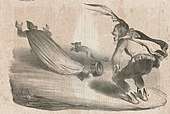 Hé! La chian..... li....li....li..... [It's a blood...dy...dy...dy... mess], lithograph of Louis-Philippe of France by Honoré Daumier, 1834
Hé! La chian..... li....li....li..... [It's a blood...dy...dy...dy... mess], lithograph of Louis-Philippe of France by Honoré Daumier, 1834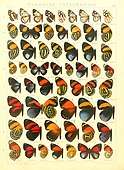 Butterflies from Adalbert Seitz's Macrolepidoptera of the World (1923).
Butterflies from Adalbert Seitz's Macrolepidoptera of the World (1923).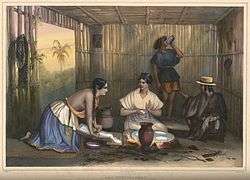 An 1836 lithograph of Mexican women making tortillas by Carl Nebel.
An 1836 lithograph of Mexican women making tortillas by Carl Nebel.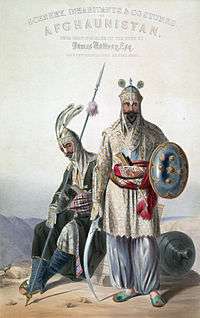 Royal Afghan soldiers of the Durrani Empire in Afghanistan (1847)
Royal Afghan soldiers of the Durrani Empire in Afghanistan (1847)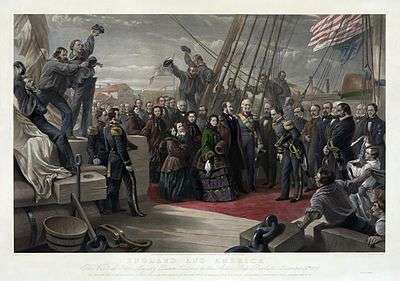 Queen Victoria visits HMS Resolute - George Zobel after William Simpson (1859)
Queen Victoria visits HMS Resolute - George Zobel after William Simpson (1859)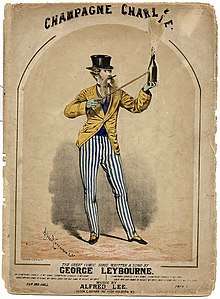 Alfred Concanen's 1867 design for Champagne Charlie
Alfred Concanen's 1867 design for Champagne Charlie.jpg) At Eternity's Gate, 1882 lithograph by Vincent van Gogh
At Eternity's Gate, 1882 lithograph by Vincent van Gogh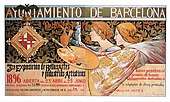 3ra. Exposición de Bellas Artes é Industrias Artísticas, 1896 lithograph by Alexandre de Riquer
3ra. Exposición de Bellas Artes é Industrias Artísticas, 1896 lithograph by Alexandre de Riquer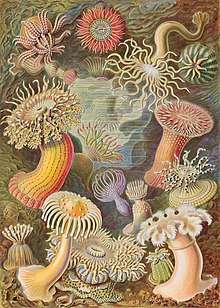 Sea anemones from Ernst Haeckel's Kunstformen der Natur (Artforms of Nature), 1904
Sea anemones from Ernst Haeckel's Kunstformen der Natur (Artforms of Nature), 1904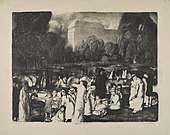 In the Park, Light – George Bellows 1916
In the Park, Light – George Bellows 1916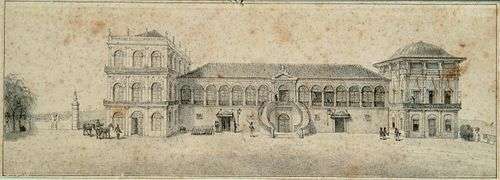 Palace of São Cristóvão, the former residence of the Emperors of Brazil, 19th century lithograph by Jean-Baptiste Debret
Palace of São Cristóvão, the former residence of the Emperors of Brazil, 19th century lithograph by Jean-Baptiste Debret
See also
- Block printing
- Color printing
- Etching
- Flexography
- German inventors and discoverers
- History of graphic design
- Letterpress printing
- Lineography
- Lithography using MeV ions – Proton beam writing
- Photochrom
- Theodore Regensteiner inventor of the four-color lithographic press
- Rotogravure
- Seriolithograph
- Stencil lithography
- Stereolithography
- Typography
References
- Brooks, Frederick Vincent (1911). . In Chisholm, Hugh (ed.). Encyclopædia Britannica. 16 (11th ed.). Cambridge University Press. pp. 785–789.
- Weaver, Peter. (1964) The Technique of Lithography. London: B.T. Batsford, p. 49.
- Meggs, Philip B. A History of Graphic Design. (1998) John Wiley & Sons, Inc. p 146 ISBN 0-471-29198-6
- Carter, Rob, Ben Day, Philip Meggs. Typographic Design: Form and Communication, Third Edition. (2002) John Wiley & Sons, Inc. p 11
- Pennel ER, ed. (1915). Lithography and Lithographers. London: T. Fisher Unwin Publisher.
- Hill, James. "Digital & Photographic". St Barnabas Press.
- Hannavy, John. editor. Encyclopedia of nineteenth-century photography: A-I, index, Volume 1. Taylor & Francis (2008). ISBN 9780415972352. page 865.
- Mansuripur, Masud. Classical Optics and Its Applications. Cambridge University Press (2002) ISBN 9780521804998. page 416
- A. B. Hoen, Discussion of the Requisite Qualities of Lithographic Limestone, with Report on Tests of the Lithographic Stone of Mitchell County, Iowa, Iowa Geological Survey Annual Report, 1902, Des Moines, 1903; pages 339–352.
- Gascoigne, Bamber (1988). How to Identify Prints: a complete guide to manual and mechanical processes from woodcut to ink jet. Spain: Thames and Hudson. p. 1c.
- Lynam, Edward. 1944. British Maps and Map Makers. London: W. Collins. Page 46.
- see diagram at compassrose.com
- Grilli, S.; Vespini, V.; Ferraro, P. (2008). "Surface-charge lithography for direct pdms micro-patterning". Langmuir. 24: 13262–13265. doi:10.1021/la803046j. PMID 18986187.
- Paturzo, M.; Grilli, S.; Mailis, S.; Coppola, G.; Iodice, M.; Gioffré, M.; Ferraro, P. (2008). "Flexible coherent diffraction lithography by tunable phase arrays in lithium niobate crystals". Optics Communications. 281: 1950–1953. doi:10.1016/j.optcom.2007.12.056.
- Specimens of Polyautography, Consisting of Impressions taken from Original Drawings, Made on Stone purposely for this Work. London: Philipp André. 1803.
- Orozco, Miguel (2018). Picasso lithographer and activist. Academia.edu.
- History of 20th century lithography by Picasso, Matisse, Chagall, Braque, Leger at Atelier Mourlot, French Institute Alliance Française Archived July 23, 2012, at the Wayback Machine
- Mourlot, Fernand. Twentieth Century Posters. Wellfleet Press: Secaucus, New Jersey, 1989
- "What is a Serilith?". Archived from the original on 2007-11-09. Retrieved 2007-11-02.
External links
| Wikimedia Commons has media related to Lithography. |
- About Lithography
- Twyman, Michael. Early Lithographed Books. Pinner, Middlesex: Private Libraries Association, 1990
- Museum of Modern Art information on printing techniques and examples of prints
- The Invention of Lithography, Aloys Senefelder, (Eng. trans. 1911) (a searchable facsimile at the University of Georgia Libraries; DjVu and layered PDF format)
- Theo De Smedt's website, author of "What's lithography"
- Extensive information on Honoré Daumier and his life and work, including his entire output of lithographs
- Digital work catalog to 4000 lithographs and 1000 wood engravings
- Detailed examination of the processes involved in the creation of a typical scholarly lithographic illustration in the 19th century
- Nederlands Steendrukmuseum
- Delacroix's Faust lithographs at the Davison Art Center, Wesleyan University
- A brief historic overview of Lithography. University of Delaware Library. Includes citations for 19th century books using early lithographic illustrations.
- Philadelphia on Stone: The First Fifty Years of Commercial Lithography in Philadelphia. Library Company of Philadelphia. Provides an historic overview of the commercial trade in Philadelphia and links to a biographical dictionary of over 500 Philadelphia lithographers and catalog of more than 1300 lithographs documenting Philadelphia.
- Prints & People: A Social History of Printed Pictures, an exhibition catalog from The Metropolitan Museum of Art (fully available online as PDF), which contains material on lithography